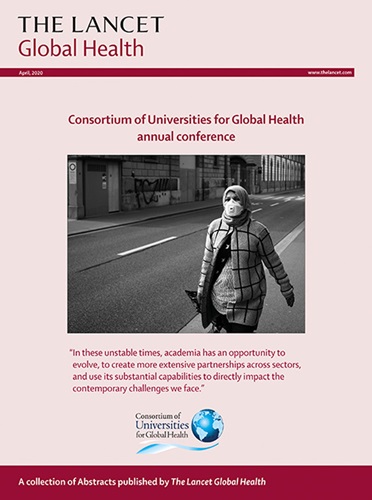Global antibiotic consumption and regional antimicrobial resistance, 2010-21: an analysis of pharmaceutical sales and antimicrobial resistance surveillance data.
IF 19.9
1区 医学
Q1 PUBLIC, ENVIRONMENTAL & OCCUPATIONAL HEALTH
引用次数: 0
Abstract
BACKGROUND The rising prevalence of antimicrobial resistance driven by inappropriate antibiotic consumption has become a major global challenge. We aimed to examine spatiotemporal patterns of antibiotic consumption across countries from 2010 to 2021 and explore factors associated with the prevalence of antibiotic resistance. METHODS We used the latest data on antibiotic consumption from the IQVIA MIDAS database, a globally standardised system for tracking pharmaceutical sales, to characterise changes in consumption patterns of WHO Access, Watch, Reserve, and non-recommended antibiotics across 74 countries and regions during 2010-21. A linear mixed model was used to identify potential socioeconomic and environmental factors associated with antimicrobial resistance detection rate across 26 European countries for 14 bacterium-antibiotic resistance pairs, using data from the European Antimicrobial Resistance Surveillance Network. FINDINGS Between 2010 and 2021, antibiotic consumption increased in most studied countries or regions in the WHO South-East Asia region (four of five), African region (three of three), region of the Americas (seven of 13, all seven in Latin America), and the Eastern Mediterranean region (five of nine). The highest annual growth rate of antibiotic consumption was found in the eight countries of west Africa (7%; formerly known as French West Africa), followed by China (7%) and Algeria (5%). Conversely, antibiotic consumption decreased in most countries in the WHO European region (25 of 33) and the Western Pacific region (nine of 11). In 2011, amoxicillin was the most used antibiotic (28%), followed by azithromycin (10%) and doxycycline (10%). The linear mixed model revealed that, among the 26 countries, antimicrobial resistance was positively associated with both antibiotic consumption rate and annual average temperature, while being negatively associated with GDP per capita and proportion of current health expenditure. INTERPRETATION The global use of antibiotics has substantially changed in the past decade, with more countries meeting the WHO target for Access antibiotics. Increasing antibiotic consumption in the WHO South-East Asia and African regions and its impact on antibiotic resistance warrant close monitoring. Policies on expanding health expenditures to promote appropriate use of antibiotics should be encouraged. FUNDING National Key R&D Program of China and National Natural Science Foundation of China.2010-21年全球抗生素消费量和区域抗菌素耐药性:药品销售和抗菌素耐药性监测数据分析
不适当抗生素消费导致的抗菌素耐药性日益普遍,已成为一项重大的全球挑战。我们旨在研究2010年至2021年各国抗生素消费的时空格局,并探讨与抗生素耐药性流行相关的因素。方法我们使用来自IQVIA MIDAS数据库(一个全球药品销售跟踪标准化系统)的最新抗生素消费数据,描述2010-21年期间74个国家和地区世卫组织可及、观察、储备和非推荐抗生素消费模式的变化。利用欧洲抗菌素耐药性监测网络的数据,采用线性混合模型确定与26个欧洲国家14对细菌-抗生素耐药性对的抗菌素耐药性检出率相关的潜在社会经济和环境因素。在2010年至2021年期间,世卫组织东南亚区域(5个国家中有4个)、非洲区域(3个国家中有3个)、美洲区域(13个国家中有7个,全部7个在拉丁美洲)和东地中海区域(9个国家中有5个)的大多数研究国家或区域的抗生素消费量增加。抗生素消费年增长率最高的是西非八个国家(7%;以前称为法属西非),其次是中国(7%)和阿尔及利亚(5%)。相反,世卫组织欧洲区域(33个国家中的25个)和西太平洋区域(11个国家中的9个)的大多数国家的抗生素消费量有所下降。2011年,阿莫西林是使用最多的抗生素(28%),其次是阿奇霉素(10%)和强力霉素(10%)。线性混合模型显示,在26个国家中,抗菌素耐药性与抗生素消费率和年平均温度呈正相关,而与人均GDP和当前卫生支出比例呈负相关。在过去十年中,全球抗生素的使用发生了重大变化,越来越多的国家达到了世卫组织获得抗生素的目标。世卫组织东南亚和非洲区域抗生素消费的增加及其对抗生素耐药性的影响值得密切监测。应鼓励扩大卫生支出以促进适当使用抗生素的政策。国家重点研发计划,国家自然科学基金。
本文章由计算机程序翻译,如有差异,请以英文原文为准。
求助全文
约1分钟内获得全文
求助全文
来源期刊

Lancet Global Health
PUBLIC, ENVIRONMENTAL & OCCUPATIONAL HEALTH-
CiteScore
44.10
自引率
1.20%
发文量
763
审稿时长
10 weeks
期刊介绍:
The Lancet Global Health is an online publication that releases monthly open access (subscription-free) issues.Each issue includes original research, commentary, and correspondence.In addition to this, the publication also provides regular blog posts.
The main focus of The Lancet Global Health is on disadvantaged populations, which can include both entire economic regions and marginalized groups within prosperous nations.The publication prefers to cover topics related to reproductive, maternal, neonatal, child, and adolescent health; infectious diseases (including neglected tropical diseases); non-communicable diseases; mental health; the global health workforce; health systems; surgery; and health policy.
 求助内容:
求助内容: 应助结果提醒方式:
应助结果提醒方式:


